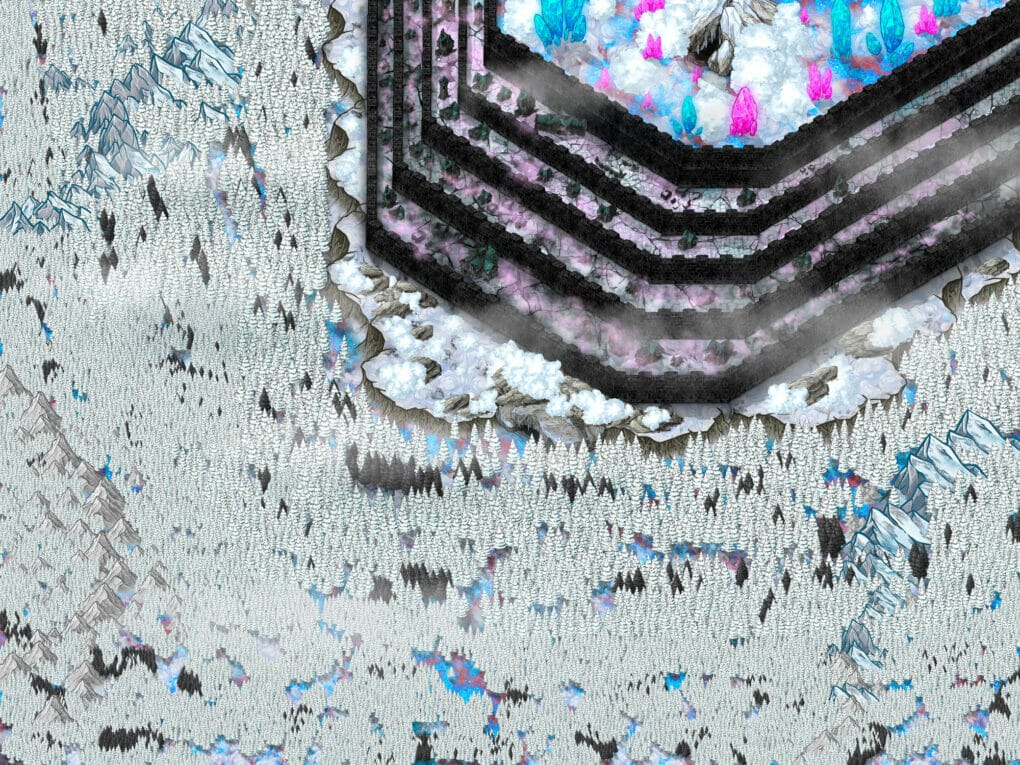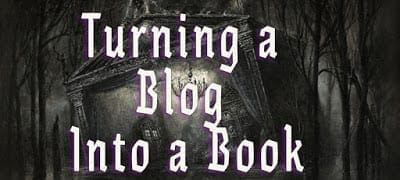
A couple of weeks ago, I released Building Dark Worlds: A World Building Guide. It’s a collection of blog posts. Let’s go through the process of how this book came about.
Collect Content
I went through all my blog posts collecting the most popular ones on world building. Fortunately, I tag all my post so I didn’t have to go through my entire archive. I simply searched for “world building.” I needed to know what I had. I pasted the posts’ contents in Word documents and saved them in one folder. I gathered about 30 posts.
Market Research
For fiction, I generally don’t like to term “write for the market” but some of that needs to come into play when writing an instructional non-fiction. Your book has to provide for your readers need. That means you should know your audience while you’re creating the book. Not after.
Before I decided what I was going to do with these posts, I did an Amazon search for world building books. There are a lot of them. I couldn’t release a general fantasy world building book given the steep completion. Why would anyone buy my book? I needed an angle. But what?
What does dark mean?
I knew I wanted the book to be about dark world building since I didn’t see any titles on that topic. I wasn’t entirely sold on the idea because I couldn’t wrap my head about what that meant exactly. What is “dark world building?” Doing a Google search didn’t help. In Evernote, a free app, I jotted down what I thought a dark world meant.
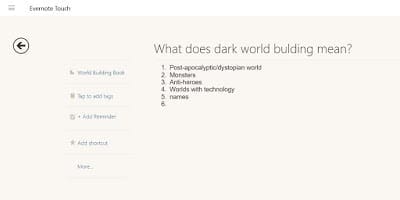
Now I have some idea of the book’s focus.
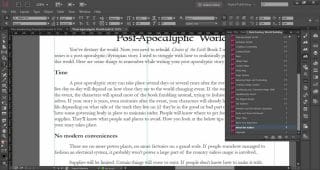
I divided the book into parts.
- Defining Dark
- Inspiration
- Names
- The Dark World
- Magic System
- Map Making
- Populating your world
Organizing some section was pretty straight forward, Apocalypse, Post-Apocalypse and Dystopia go together. Any post on creating names goes together. As you can see, not all the sections are “dark.” There’s a lot of cross-over between a dark world and a tradition fantasy/sci-fi world. I kept the “dark” theme running throughout the book.
Rewriting
There was a fair amount of rewriting going on. Some blog posts were similar enough to be combine. Map making needed to be condensed. I couldn’t include every blog post I published on maps. Some of them wouldn’t make sense in the book. Any links in the blog posts needed to be removed. I added new content to some sections.
Unless you’re turning a blog post series into a book, more than likely, your content won’t flow. You’ll need to do some rewriting and organizing to ensure readers aren’t jarred out of the book every time they reach a new section.
Research
I wrote most of the content that went into the book years ago. Most needed some updating, some new content added. I did a lot of research for this book. I also added some new sections- Dystopian Worlds and Monsters and Non-Human Characters. I needed to research those topics. I also needed to understand the difference between a post-apocalyptic and a dystopian world. I complied my research material in an Evernote Notebook.

I also included a lot of my research materials in the book as “More Resources”.

Preparing Images for Your e-Book by David Kudle
Cover
In Behind the Cover: Cover Reveal!!!, I showed you what went into designing the cover for Building Dark Worlds. I also talked about how I named the book.
You’ve probably read some instructional non-fiction books. Most of the covers have a solid color background. The font is usually plain and wide. That’s not my brand. I didn’t want to make a cover like that. I looked at the world building books on Amazon. They had fantasy/sci-fi like covers, which meant I didn’t have to stick to a formula for my book cover.
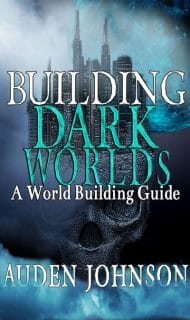
Description
I went back to Amazon to read different book summaries. I needed my book’s description to fit in the market but still belong in my brand.
Dark worlds. They fascinate us, terrify us, even inspire us. Dark doesn’t always mean evil. It doesn’t always mean monsters and creepy landscapes. The world isn’t limited to landscapes and cityscapes. It involves people, life. This book explores the different aspects of creating a dark world. It gives you tips on building and populating a world that ensnares readers.
-Why do we like dark fiction
-Naming your world
-Finding inspiration
-Writing apocalyptic, post-apocalyptic and dystopian stories
-Creating a magic system
-Writing Antiheroes/heroines and monsters
-Map Making
-and more
As you can see, even though most of the book is already written, a lot a work goes into turning blog posts into a book.




